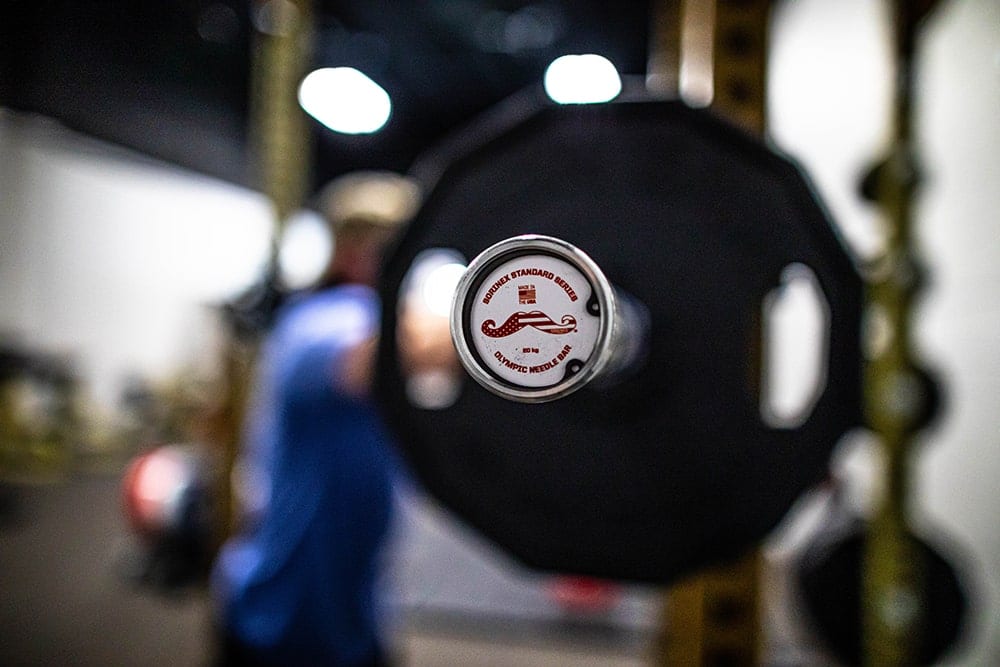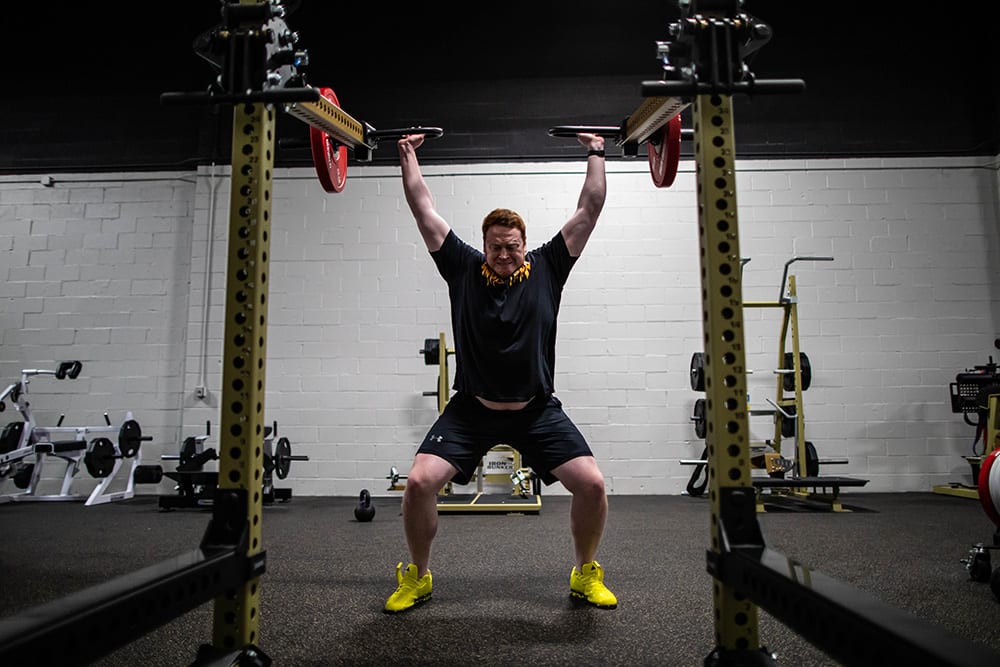
What I did to hit a golf ball farther
by Mike Whitman
Two years ago I went down to Columbia, South Carolina to compete in World Long Drive. It was open qualifiers, something I knew basically nothing about and it was a completely new experience for me. It wasn’t really something I was interested in until I was getting a club fitting for some irons and a new driver. During that process the person doing the fitting suggested that I would have a shot at long drive based on my swing speed and I might want to look into it. Worst case scenario it would at least be fun, and something else to work on relative to the world of golf. So I ordered a new driver, made a few swing adjustments, and changed my program to increase my clubhead speed as much as possible.
Part of understanding how to adjust your program requires understanding of how the human body actually generates power, and in this case, generating power in a golf swing. Like every other land-dwelling sport, ground force production is critical. Improving ground force production basically boils down to how much force you can put into the ground in the shortest period of time. Then, ideally, the hips unwind, the lower body and upper body separate from each other creating immense amounts of tension in the swing, the hands stay on plane, accelerate through impact, and the clubhead explodes through the ball. Bam, big ass drives.
So how did I adjust my training to improve my GFP? First I added Olympic lifts back in my program. It had been a while since I had done them consistently so the first few weeks were all about tightening up form, and figuring out how I wanted to program them relative to my goal. Initially I added in power cleans and hang power snatches. I was more concerned with exploding vertically as hard as possible than I was about dropping under the bar and trying to improve my max. It was all about speed.
I watched this video on youtube (I searched for it for over an hour today, and can’t find it, sorry) from a strength coach working with hammer throwers. He made an interesting point, he never wants his athletes to practice dropping under the bar because he never wants to train the body to reduce its GFP in an effort to get under the bar. Intriguing to say the least. Fantastic Olympic lifters are fantastic and getting under the bar, which wasn’t my goal. So I tested it out. I used a computer system to measure peak velocity, average velocity, peak force production, and average force production to find out what weights and what type of Olympic lifts would translate best to my goal. I’ll be damned the guy was pretty spot on. Even in the Olympic lifts I produced more power moving a lighter weight a much larger distance in a shorter period of time. I don’t have the exact numbers anymore but the basic gist of it was I produced significantly more power, in every aspect, if I did no-drop cleans and no-drop snatches, than if I actually dropped under the bar. The physics make perfect sense. So, as I am wont to do, I adjusted my program changing some of my Olympic lifting to no-drop Olympic lifting.
I have brought this idea up to other people, and usually I get a quizzical look, but think about it for one second. If I am trying to train triple extension, that 3rd pull phase, I am going to have to produce a shit ton of force to clean a weight straight up to my shoulders, or throw a bar straight over my head without dropping to receive it. Also, the weight will inherently have to move faster to cover that distance and I am loading my spine with less weight. As someone who has had a few back injuries, and was hitting a ton of golf balls at the time, I didn’t need a ton of extra spinal load and certainly didn’t want to risk catching a heavy clean or a snatch wrong, aggravating my left wrist, which has some limited mobility due to an injury I sustained years ago that never really healed correctly.
So outside of adding the Olympic lifts, I took a bunch of shit out. Heavy deadlifts were gone. I needed to be able to rotate and separate my upper and lower halves as much as possible. Heavy deadlifts require you to have a lot of spinal stability and I needed mobility. Heavy barbell squats also out for basically the same reason. Keep in mind that I am using the term heavy as anything over 70% of my 1RM, which for deadlifts the most I ever pulled was 515, so nothing over 365. Even then reaching up to 365 was a rarity. I also took out any version of chest work. Chest work and golf swings don’t really go hand in hand, if your pecs get too big, or too tight, you will fuck up your swing. Horizontal pressing, out. Rows and bent over rows, out. Same thing, I needed to keep the shoulders loose and if the lats get too tight I’m going to lose mobility. Also big biceps don’t translate to long golf shots. Horizontal pulling, out. My program didn’t have much other frivolous shit in it, it was all based on compound movements, so it wasn’t like I had to take out bicep curls, tricep extensions, leg curls or other single joint movements like that.
What did I end up with? A program where I lifted 6 days a week, but I kept the lifts short and explosive so I was always fresh enough to go to the range. Here was the skeleton of what I came up with:
Day 1:
No-drop cleans
Military press
Versa Pulley shoulder circuit for mobility and shoulder health
Day 2:
Pit Shark Squats or Pit Shark Jump Squats
Pull-ups
Calf raises and grip work
Day 3:
No-drop hang snatches
Rotational work on the Versa Pulley
Head and Neck
Day 4:
Deadlifts or RDLs
Military press
Versa Pulley shoulder circuit
Day 5:
Power cleans
Pull-ups
Calf Raises and grip work
Day 6:
Barbell Squats or single leg RDLs depending on how my left knee felt
Rotational work on the Versa Pulley
Head and Neck
Day 7:
Just some light movement work but basically a rest day and repeat.
Each week I would adjust weights, sets, and reps but most things were programmed light, fast, and on a short rest interval, so do with that what you may. Also, everyday I did some light prehab/rehab and mobility work.
How did it work? Well in about 6 weeks I added roughly 20 to 30 yards on to my drive, I felt fast, I felt explosive and I didn’t have any nagging injuries. All in all, pretty good. How did I end up doing? I hit a ball 391 yards but that was a few yards short of getting to the finals of open qualifiers. I hit a few balls harder and farther but they didn’t stay on the grid…
So what can you take away from this? Appropriate, simple and dedicated programming works, golfers can train like athletes too, not all lifts are created equal, sometimes variations of lifts might be more effective for you or your goal than the standard lift, and being more explosive will help you hit a golf ball farther. Go out and hit ‘em hard.





Recent Comments